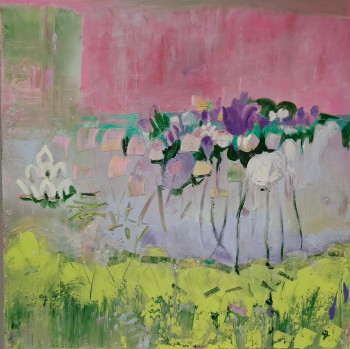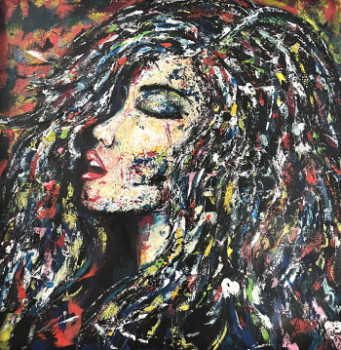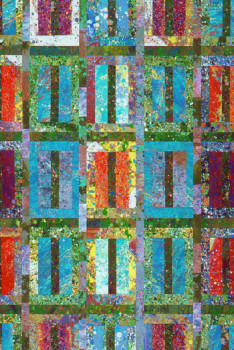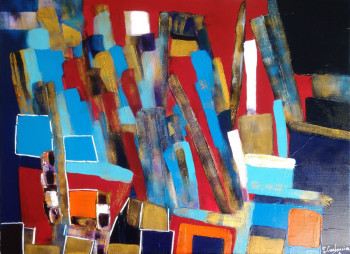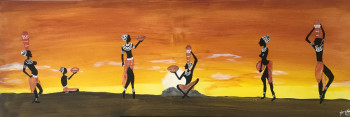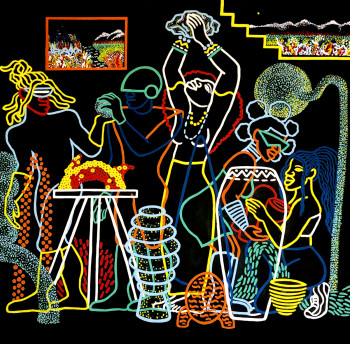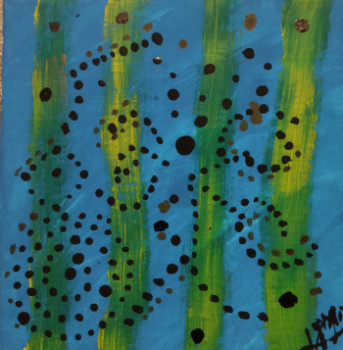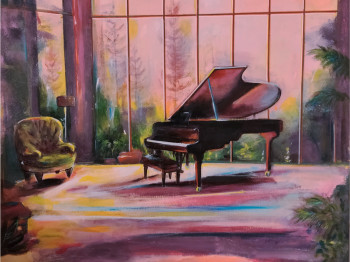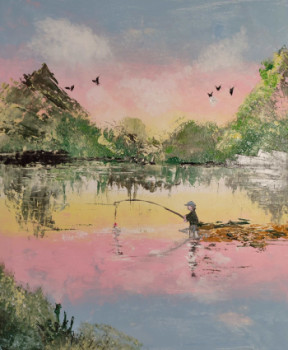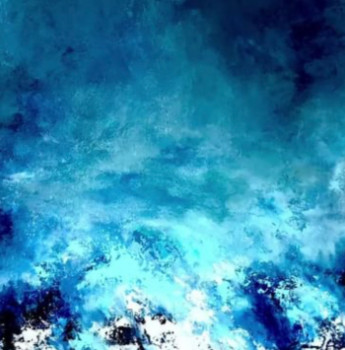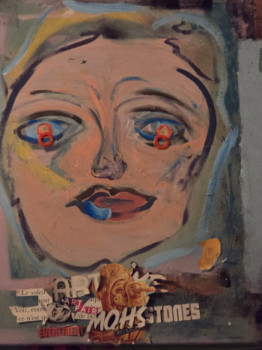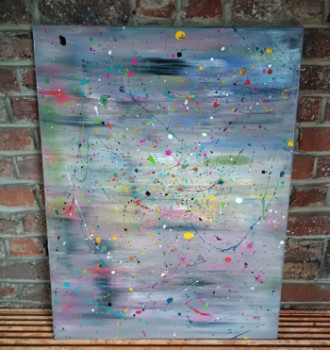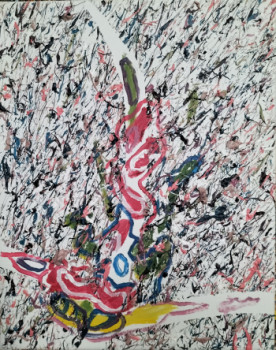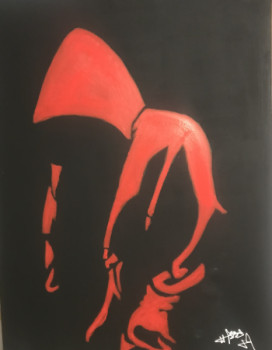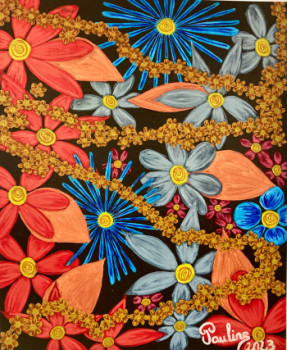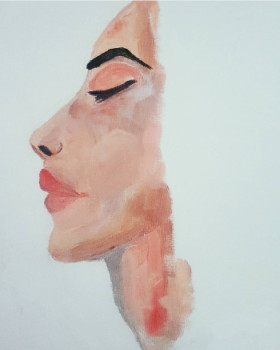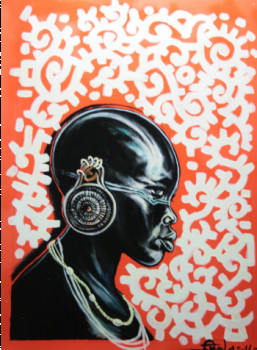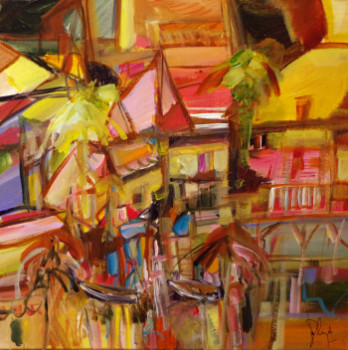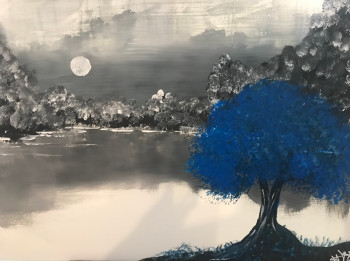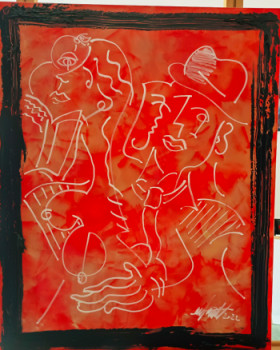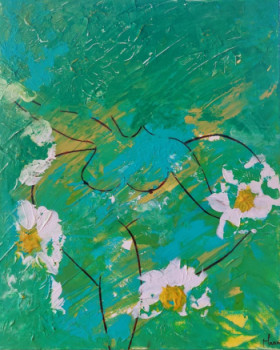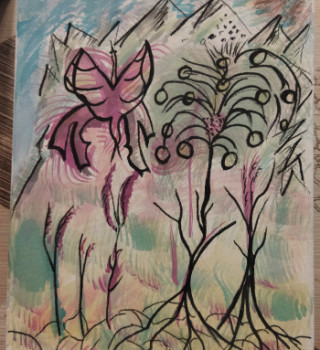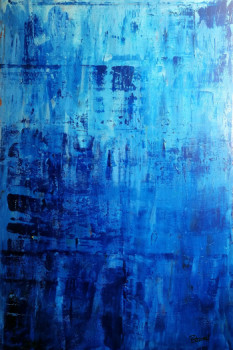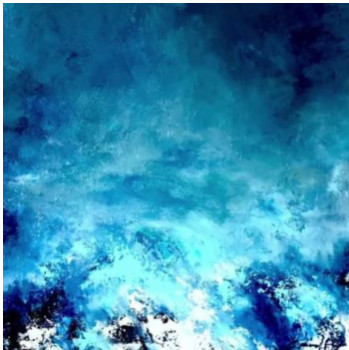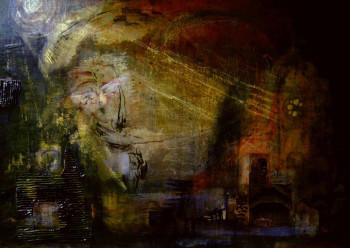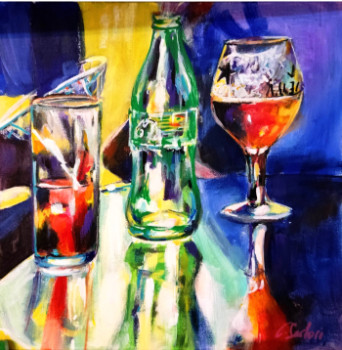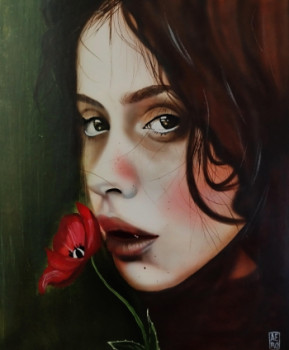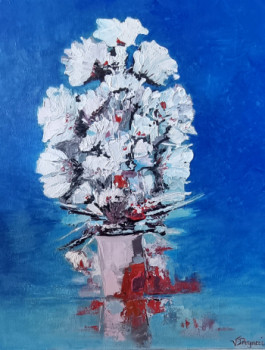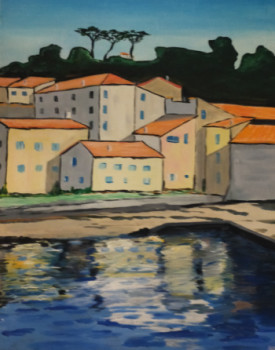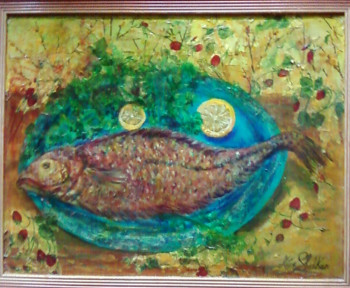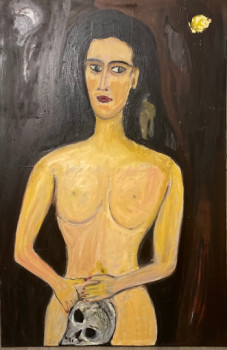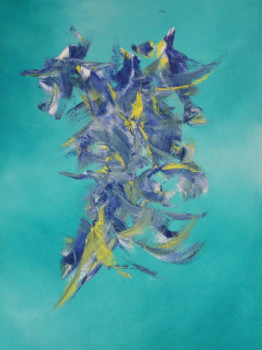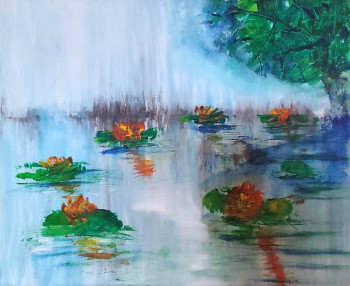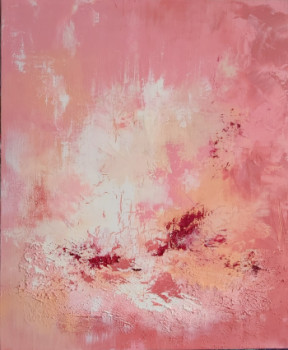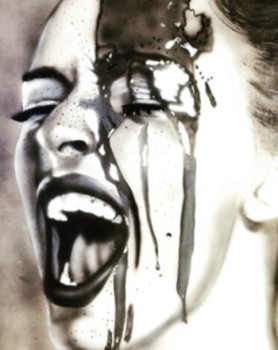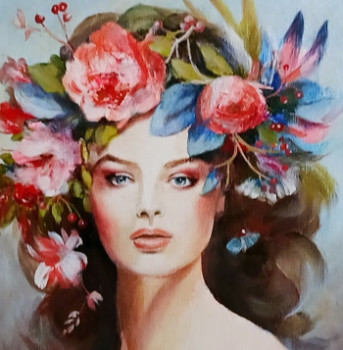
Acrylic, a paint that adapts
acrylic is a paint whose solvent is largely composed of water. It is derived made from a mixture of pigments and acrylic resin and dries by evaporation of the water it contains.(...)
The American printers Leonard Bocour and Sam Golden invent a first re version of acrylic paint and put it on sale in 1949. Subsequently, the chemist Henry Levinson created artistic acrylic paint in 1963, diluting it in water. Painters such as Andy Warhol and David Hockney used it very quickly.
In Mexico it was also widely used. designed around 1950. Chemists, in collaboration with Mexican mural painters, developed it during the creation of frescoes on the facades of the university. from Mexico.
From its beginnings, acrylic has been linked to abstract painting and opened new possibilities for contemporary artists.
The Masters of Acrylic
The first abstract painters use acrylic paint are Willem de Kooning, Rothko, Barnett Newman or even Kenneth Noland. Bridget Riley, a leading figure in optical art, also used optical art. acrylic for its ability to unique to hold on different supports including wood, paper, canvas and linen.
Ellsworth Kelly and Mark Rothko, artists of abstract expressionism also favorite acrylic. Rothko used it extensively; to design a series of untitled canvases where he sought develop tone, depth, color and perspective. The coloring properties of acrylic allowed painters to explore pure color, without worrying that the pigments would fade over time.
Apart from the abstract, British artist David Hockney also used abstracts. used acrylic paint for his iconic swimming pool paintings, as well as in his famous works of the 1960s.
Nowadays, several contemporary painters continue to explore its potential, such as Daniela Schweinsberg, Francesco D'Adamo and Nestor Toro. Contemporary street artists Virginia Valère and Niki Hare are also aficionados of acrylic paint.
Acrylic and its techniques
Many style effects are possible with acrylic paint, across a wide range of mediums. Some facilitate application (multipurpose mediums), others modify the finish (glossy or satin) or even the texture (gel medium, imposture medium, texture paste). When using acrylic paint, we often distinguish between transparent paint (glaze) and opaque paint.
We can create opaque paint with acrylic colors, using imposture techniques(impasto). "Impasto" refers to a technique in which undiluted paint is applied thickly to the canvas either with a knife or a brush. Using this imposture technique, the artist often mixes the paint on the canvas to achieve the desired color. Implosions can give a three-dimensional impression. Rough texture can draw attention to certain points or aspects of a composition. The advantage of using acrylic paint alone is that it has a strong covering power and benefits from all its opacity.
On the contrary, with acrylic paint, you can sketch layers of transparent paints called glaze. A glaze is a thin, translucent film mixed with Use acrylic paint to create a rich, luminous hue and texture to the surface. By applying a transparent layer of glaze over another layer of opaque paint, you can, for example, create a unique stained glass effect. The more water there is, the more the acrylic will lose its opacity. and will become clear, as the pigment concentration will reduce. Undiluted acrylic paint will dry in a few minutes. On the other hand, the more you dilute it, the longer the drying time will be.
Specifications and Benefits
The main quality of this The main advantage of acrylic paint is its adaptability. : dilution in water, ease of use of mixtures and application as well as its versatility of supports.
Because it is versatile. water-based, it is easy to change its consistency. It can be used Painted in thick layers, or thinned with water to create a watercolor effect. It can also be mixed with with pastes and gels to give it a unique texture and effect that cannot be achieved with any other technique.
Easy to do; Once applied, acrylic paint dries quickly. Unfortunately, this can cause recovery marks. This is an advantage when it comes to working on the different layers more quickly, but can be a disadvantage by preventing retouching. Acrylic is lightweight, permanent and easy to wear. manipulate. It is resistant to light, so it does not fade following exposure. light exposure, even the lightest colors do not yellow over time. It is also resistant to stains. water and humidity (good covering power) once dried and does not crack over time. long-term.
Acrylic paint can be applied on any wall. in single layer or double layer.
- In a single coat, it must of course have good covering power. It also requires a perfectly prepared support, whether it is a new surface having received a suitable undercoat or an old paint in good condition for example. /li>
- As a two-coat, acrylic paint lends itself to painting. supports that are slightly porous, partially coated or have a non-uniform appearance.
The real technical limitation of acrylic is facing it; a fatty substance. So it cannot be mixed or diluted with oil or gasoline.
Finally, acrylic can be manipulated in any way. with a great variety tools: brushes, but also rollers, sharpening knives. palette and even the artist’s own hands.
